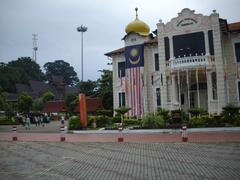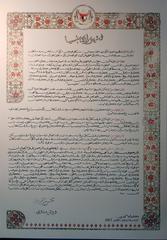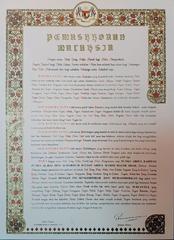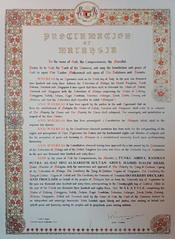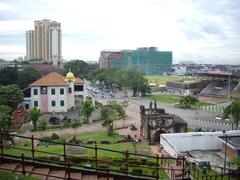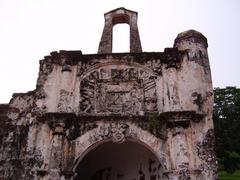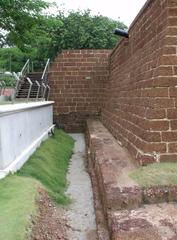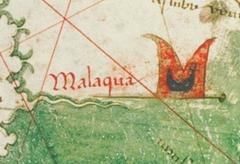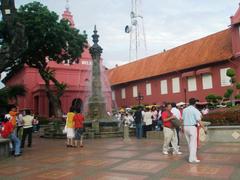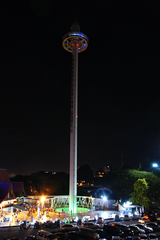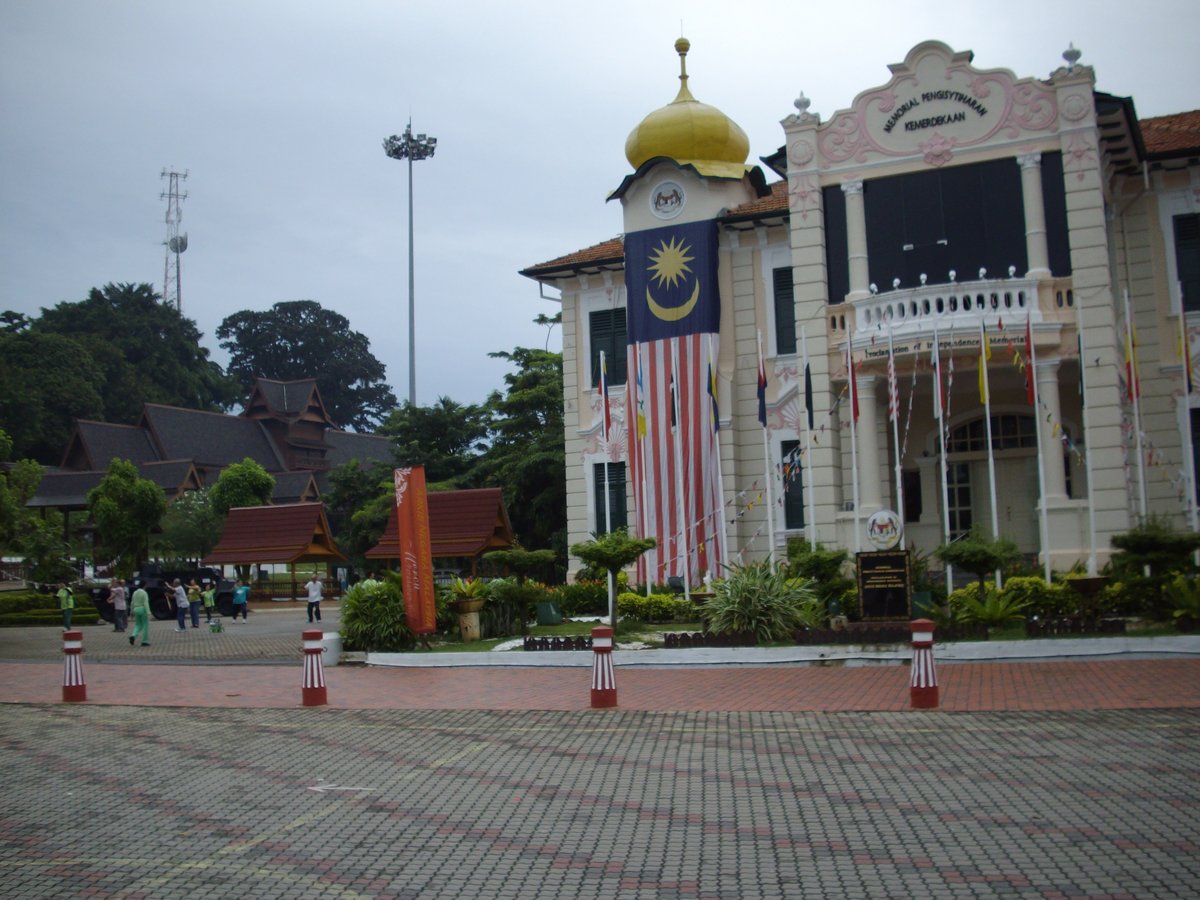
Comprehensive Guide to Visiting Proclamation of Independence Memorial, Tanjung Kling, Malaysia
Date: 01/08/2024
Introduction
The Proclamation of Independence Memorial, located in Tanjung Kling, Melaka, Malaysia, symbolizes Malaysia’s triumph over colonial rule and its journey towards independence. Established on August 31, 1985, by Malaysia’s first Prime Minister, Tunku Abdul Rahman Putra Al-Haj, the memorial marks the significant milestone of Malaysia’s independence from British rule. Housed in the former Malacca Club building, a colonial structure built in 1912, the memorial provides a poignant reminder of the nation’s past and its transition to self-governance. This comprehensive guide aims to provide visitors with essential information, historical context, and travel tips to make the most of their visit to this historic landmark. (Gponeit, Wahdah)
Table of Contents
- Introduction
- History and Significance
- Visitor Information
- Exhibits and Features
- Cultural and Educational Impact
- Visitor Experience
- Commemorative Events
- Modern-Day Relevance
- FAQs
- Conclusion
History and Significance
Establishment and Historical Context
The Proclamation of Independence Memorial was inaugurated on August 31, 1985, by Malaysia’s first Prime Minister, Tunku Abdul Rahman Putra Al-Haj. This date marks the 38th anniversary of Malaysia’s independence from British colonial rule. The memorial is housed in the former Malacca Club building, a British colonial structure built in 1912. Initially, this building served as a social hub for the British upper class and administrators. Post-independence, it was repurposed to serve the public, symbolizing the transition from colonial rule to self-governance.
The Road to Independence
Malaysia’s journey to independence was a complex process involving various stages of resistance and negotiation. The region, known as Malaya before independence, was initially inhabited by indigenous tribes and later influenced by Indian and Chinese traders. The spread of Islam further shaped the cultural landscape. During the 18th and 19th centuries, European powers, including the British, began to establish colonies in Southeast Asia. By the late 19th century, Malaya was under British colonial rule, administered by various British entities (Wahdah).
The struggle for independence gained momentum after World War II, with the formation of political parties such as the United Malays National Organisation (UMNO) and the Malayan Chinese Association (MCA). These parties played a crucial role in pushing for self-governance. The efforts culminated in a series of negotiations led by Tunku Abdul Rahman, who successfully secured independence for Malaya on August 31, 1957. This historic moment was marked by the lowering of the British Union Jack and the raising of the new Malayan flag at the Selangor Club Padang in Kuala Lumpur (Wahdah).
The Proclamation of Independence
The Proclamation of Independence was a pivotal event in Malaysia’s history. On the night before the official declaration, Malaysians gathered at the Selangor Club Padang to witness the symbolic lowering of the British flag. The following morning, thousands assembled at Merdeka Stadium in Kuala Lumpur. The Duke of Gloucester, representing the Queen, handed Tunku Abdul Rahman a symbolic token of independence. Tunku then read the Proclamation of Independence and led the crowd in shouting “Merdeka” seven times, signifying the birth of a new nation (Wahdah).
Visitor Information
Visiting Hours and Ticket Information
The Proclamation of Independence Memorial is open to the public from Tuesday to Sunday, from 9:00 AM to 5:30 PM. Admission is free, making it accessible to everyone interested in learning about Malaysia’s heritage.
Travel Tips and Nearby Attractions
The memorial is located in Malacca, a city rich in history and culture. Nearby attractions include the A Famosa fortress, St. Paul’s Hill, and the Malacca Sultanate Palace. These sites offer a deeper insight into the region’s historical significance and are perfect for a full day of exploration.
Exhibits and Features
Significance of the Memorial
The Proclamation of Independence Memorial serves as a repository of Malaysia’s rich history and the indomitable spirit of its people. The exhibits include a collection of manuscripts, videotapes, and other audio-visual materials displayed in chronological order. These exhibits are categorized into several sections, covering the early Malay Sultanate, the foreign invasions by the Portuguese, Dutch, and British colonizers, the brief Japanese occupation, and the various efforts leading up to the declaration of independence and the formation of the government post-independence.
Notable Exhibits
One of the notable exhibits is the “Kereta Merdeka,” a Chevrolet limousine used by Tunku Abdul Rahman during the independence celebrations. This vehicle, with the plate number BE 52, is displayed in the courtyard of the memorial building, serving as a tangible link to the historic events of 1957 (Gponeit).
Cultural and Educational Impact
The memorial is not just a historical site but also an educational resource that provides visitors with an in-depth understanding of Malaysia’s journey to independence. It symbolizes the unity and collective effort of various ethnic groups in Malaysia, including the Malays, Chinese, and Indians, who came together to fight for a common cause. The memorabilia and records housed in the memorial reflect the courage and determination of these groups in their struggle for freedom.
Visitor Experience
Visiting the Proclamation of Independence Memorial offers a unique opportunity to delve into Malaysia’s past. The exhibits are meticulously organized to provide a comprehensive narrative of the country’s history. The memorial is open to the public from Tuesday to Sunday, with specific operating hours. Admission is free, making it accessible to everyone interested in learning about Malaysia’s heritage.
Commemorative Events
The significance of the Proclamation of Independence is celebrated annually on August 31st, known as Hari Merdeka or Malaysia’s Independence Day. This day is marked by various rituals and traditions that reflect the country’s cultural diversity and the pride of its people. Key events include parades, flag-raising ceremonies, and cultural performances. These celebrations are not just about commemorating the past but also about fostering a sense of unity and national pride among Malaysians (Wahdah).
Modern-Day Relevance
Today, the Proclamation of Independence Memorial stands as a silent witness to Malaysia’s history. It commemorates the moment when Tunku Abdul Rahman proclaimed the country’s independence to thousands of Malaysians at Padang Pahlawan (Warrior’s Field) in 1957. Although the field has now been transformed into a Megamall known as Dataran Pahlawan, the memorial continues to serve as a reminder of the nation’s journey towards self-governance and the sacrifices made by its leaders and people.
FAQs
What are the opening hours of the Proclamation of Independence Memorial? The memorial is open from Tuesday to Sunday, from 9:00 AM to 5:30 PM.
How much are tickets to the Proclamation of Independence Memorial? Admission is free for all visitors.
What are some nearby attractions to the Proclamation of Independence Memorial? Nearby attractions include the A Famosa fortress, St. Paul’s Hill, and the Malacca Sultanate Palace.
Conclusion
In summary, the Proclamation of Independence Memorial is a vital cultural and historical landmark that offers invaluable insights into Malaysia’s path to independence. It stands as a testament to the resilience and unity of the Malaysian people and serves as an educational resource for future generations. Plan your visit today to explore this remarkable site and immerse yourself in Malaysia’s rich history. (Malaysia Traveller, Lonely Planet, TripSavvy)
References
- Gponeit. (2014). Proclamation of Independence Memorial. source url
- Wahdah. (n.d.). Understanding the history of Malaysia’s Independence Day. source url
- Malaysia Traveller. (n.d.). Proclamation of Independence Memorial. source url
- Lonely Planet. (n.d.). Proclamation of Independence Memorial. source url
- TripSavvy. (n.d.). Walking tour through historical Melaka. source url
